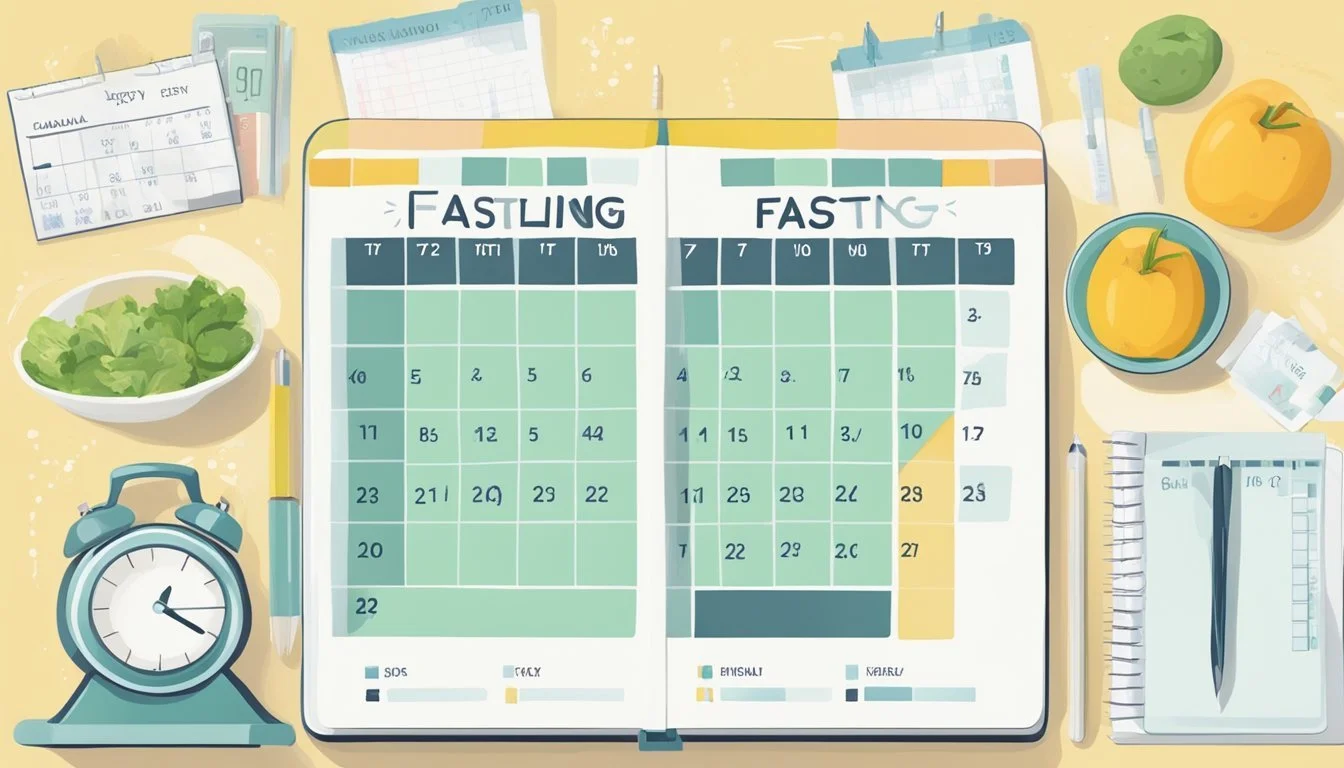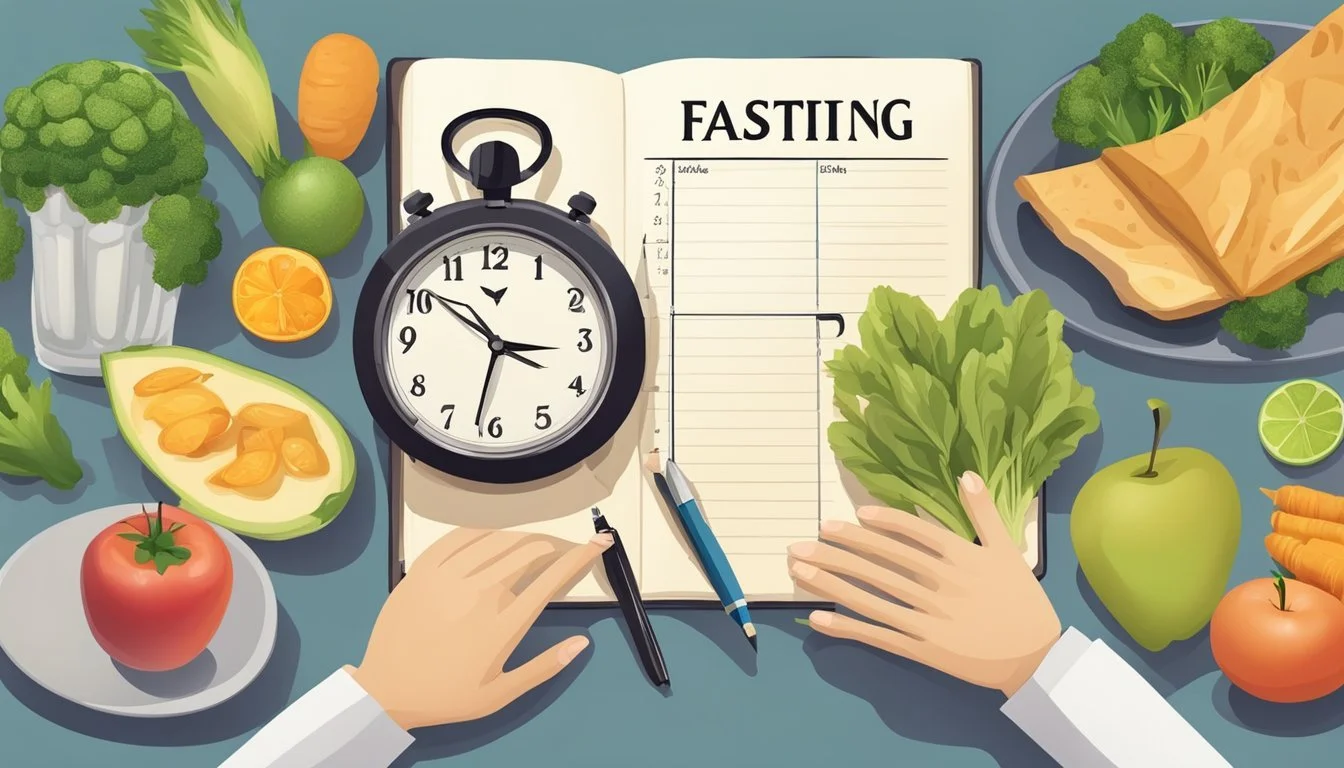How to Track Your Progress with Intermittent Fasting
Effective Monitoring Strategies
Intermittent fasting (IF) is a dietary approach that cycles between periods of fasting and eating. It doesn’t specify which foods to eat but rather when to eat them. Common IF methods include the 16:8 method, which involves fasting for 16 hours and eating during an 8-hour window, or the 5:2 approach, which entails five days of normal eating and two days of consuming a minimal number of calories. People choose intermittent fasting for various reasons, including weight loss, improved metabolic health, and simplified lifestyle.
Tracking progress during intermittent fasting is crucial for several reasons. It helps individuals stay accountable, allows for adjustments based on the body's feedback, and can serve as a source of motivation. One practical way to monitor intermittent fasting is through the use of specialized apps, which can log fasting periods, track weight loss, and even remind users when their eating windows open and close. Other methods include keeping a manual fasting log and monitoring changes in body composition and energy levels. Consistent tracking empowers people to make informed decisions about their fasting protocols and dietary habits.
Understanding Intermittent Fasting
Intermittent fasting (IF) is an eating pattern that cycles between periods of fasting and eating. It's widely recognized not only as a weight loss method but also for its role in enhancing overall health and fitness.
The Science of Fasting
Intermittent fasting primarily affects the body's metabolism, the process by which the body converts food into energy. Fasting periods prompt the body to use fat stores for energy, which may lead to weight loss. During fasting, blood sugar levels stabilize and the body's insulin sensitivity can improve, reducing the risk of type 2 diabetes.
Types of Intermittent Fasting
Several methods of intermittent fasting exist, each with its own structure:
16:8 method: Involves fasting for 16 hours and consuming all meals within an 8-hour window. It's one of the most popular forms of IF.
24-hour fasts: This involves complete fasting for 24 hours, once or twice a week, and is also known as Eat-Stop-Eat.
5:2 diet: Consuming regular meals five days a week and restricting calories to 500–600 on the other two days.
Health Benefits and Considerations
Intermittent fasting may offer multiple health benefits. It can potentially:
Improve mental clarity and concentration
Aid in weight loss and help maintain lean muscle mass
Lower risk of diseases by reducing inflammatory markers and improving risk factors for cardiovascular health
However, individuals should consider their unique health situation and may want to consult with a healthcare provider before starting an intermittent fasting routine. Special attention should be given to the timing of eating windows to align with one's circadian rhythm to optimize energy levels and further stabilize blood sugar.
Getting Started with Intermittent Fasting
Before jumping into intermittent fasting, one should establish a structured approach. This includes designing a personalized fasting plan, setting achievable goals, and determining the most suitable fasting window for their lifestyle.
Designing Your Intermittent Fasting Plan
To begin, an intermittent fasting plan should reflect an individual's health status, daily routine, and dietary preferences. This plan serves as a roadmap for when to fast and when to eat. A tailored plan assists in maintaining consistency and can minimize potential challenges during the adaptation period.
Setting Realistic Goals
Goals should be specific, measurable, attainable, relevant, and time-bound (SMART). For someone new to intermittent fasting, a starting goal might be to successfully complete a certain number of fasting days within the first month, or to see improvement in a particular health metric.
Choosing the Right Fasting Window
The choice of a fasting window is critical to synchronizing the fasting plan with one's circadian rhythm and lifestyle. Common methods include:
16:8 intermittent fast: Fast for 16 hours each day and eat during an 8-hour window.
18:6: Fast for 18 hours and eat during a 6-hour window.
This method, known as time-restricted eating, might align better with individuals who prefer fewer but larger meals, as it provides a shorter duration for food consumption.
Tracking Your Progress
When embarking on a journey of intermittent fasting, tracking progress through various methods ensures that the individual is informed about their advancement towards their goals. These methods include utilizing a fasting tracker, monitoring changes in weight and body composition, and logging meals and calorie intake for optimal weight control.
Selecting a Fasting Tracker
The first step in tracking intermittent fasting progress is to choose a suitable fasting tracker application. A fasting tracker helps visualize fasting windows and can provide reminders for start and end times. Some trackers include features that can automatically log meal times, track hydration, and monitor exercise alongside fasting periods. An ideal fasting tracker is user-friendly and aligns with one's specific fasting protocol, be it 16:8, 5:2, or any other regimen.
Monitoring Weight and Body Composition
Consistent monitoring of weight and body composition is crucial for anyone engaged in weight loss efforts through intermittent fasting. Individuals may choose to use a weight tracker, which can be a feature within a fasting app or a separate tool, that often includes charts and graphs to demonstrate weight changes over time. It is important for individuals to measure their body composition periodically, as this provides insight into changes in muscle mass and body fat percentage, offering a more comprehensive overview of their progress than weight alone.
Logging Meals and Calorie Intake
Tracking calorie intake alongside intermittent fasting can contribute to more effective weight control. Logging meals helps to maintain awareness of the quantity and quality of food consumed. It encourages an individual to be more mindful of their eating habits, ensuring that they are not just adhering to their fasting windows but also consuming nutrients essential for health. Recording food intake can be done through various apps or tools specifically designed for this purpose, which might also include detailed nutritional information for a large database of foods.
Incorporating Diet and Exercise
When engaging in intermittent fasting (IF), it's crucial for individuals to strategically manage their diet and exercise routines to ensure they're fueling their bodies appropriately while optimizing their fitness goals.
Balancing Nutrition During Eating Windows
During eating windows, an individual must focus on consuming nutritious meals that provide the necessary proteins and calories to support their fitness regimen. Here's how they can balance their diet:
Consume Protein-Rich Foods: To maintain and build muscle, individuals should prioritize protein intake. This includes lean meats, fish, legumes, and dairy products.
Monitor Calorie Intake: While fasting limits eating times, calorie intake during eating windows is still a factor. If weight loss is a goal, maintaining a calorie deficit is key.
Diversify Nutrition: Including a variety of fruits, vegetables, whole grains, and healthy fats ensures a well-rounded diet that supports overall health.
Scheduling Exercise Around Fasting
Timing exercise during intermittent fasting plays a critical role in an individual's performance and recovery. They should consider the following:
Plan Workouts During Eating Windows: Ideally, individuals should schedule intense workouts like strength training or cardio during eating periods to utilize the energy from meals.
Low-Intensity Exercises: On fasting days or outside of eating windows, low-intensity exercises such as yoga, Pilates, or walking can be effective without depleting energy reserves.
Hydration Is Key: Regardless of fasting, staying hydrated is essential, particularly around workout times to ensure optimal performance and recovery.
Enhancing Your Fasting Experience
To maximize the benefits of intermittent fasting, individuals can utilize digital tools, establish a support system, and maintain hydration and mindfulness throughout their fasting journey.
Using Apps and Digital Tools
Digital tools and apps such as MyFitnessPal are integral to tracking eating patterns and fasting history. A user can employ an intermittent fasting tracker within these apps to monitor progress by recording eating windows and fasting periods. For instance, tracking apps typically feature a fasting timer and visual progress indicators like purple bars that fill as one nears the completion of a fasting interval. Additionally, pairing fasting trackers with wearable technology like the Apple Watch allows for seamless updates on fasting patterns and real-time adjustments based on lifestyle needs.
Building a Fasting Support System
Creating a support system is essential for maintaining a healthy habit. Engaging with online forums or blogs, joining local groups, or working with a coach can provide encouragement and accountability. Tips and personal notes shared within these groups or with a coach can help an individual to refine their approach and overcome challenges that impact their mood and success.
Staying Hydrated and Mindful
While fasting, one should not neglect hydration and mindfulness. Reminders can be set via apps to prompt water intake regularly, contributing positively to one's overall well-being. Additionally, practicing mindfulness in relation to food consumption and hunger signals aligns with a conscious eating pattern. An individual might record their thoughts and experiences in a diary format, either digitally or traditionally, linking changes in mood and health with their fasting habit.
Leveraging Technology for Success
In the realm of intermittent fasting, technology can be harnessed to enhance adherence to fasting schedules and monitor progress. Various applications exist offering unique features tailored to support individuals on their fasting journeys.
Exploring Fasting Apps Features
Intermittent Fasting Tracker: Central to many fasting apps is the intermittent fasting tracker, which allows users to visually monitor their fasts. For example, the MyFitnessPal app utilizes purple bars that fill up as users approach their fasting goals. This visual cue is both motivational and informative.
Fasting Patterns Recognition: Apps like Zero and BodyFast analyze user input to discern fasting patterns, aiding users in optimizing their fasting schedules.
Mindful Eating and Water Tracking: Features that promote mindful eating and hydration, supporting the overall wellness of the user.
Journaling: Some apps include journal options to log feelings or experiences during fasts, providing insights into the relationship between diet, mood, and activity.
Maximizing App Usage with Premium Features
Free Trial and Free Version: Many intermittent fasting apps offer a free version with basic tracking features. For instance, Zero offers a basic tracking tool in its free version. Life Fasting Tracker provides a free trial period for new users to experience premium features without immediate commitment.
Zero Plus: The Zero app’s premium service, Zero Plus, offers comprehensive analytics, expert guidance, and a suite of extended features aimed at enriching the fasting experience.
Premium Features:
Custom Fasting Schedules: Available in LIFE+ premium subscription and similar in other apps, allowing users to tailor their fasting to their specific needs.
Notifications and Reminders: Premium subscriptions often include notifications reminding users to start or end fasts.
Support Team: Access to a dedicated support team or guidance from nutritionists, which is a feature lauded by sources like Good Housekeeping.
Each feature is designed with the user's success in mind, aiming to provide an experience that is not just about tracking fasts, but boosting outcomes such as better sleep patterns, lower stress levels, and a grasp on mindful eating practices.




